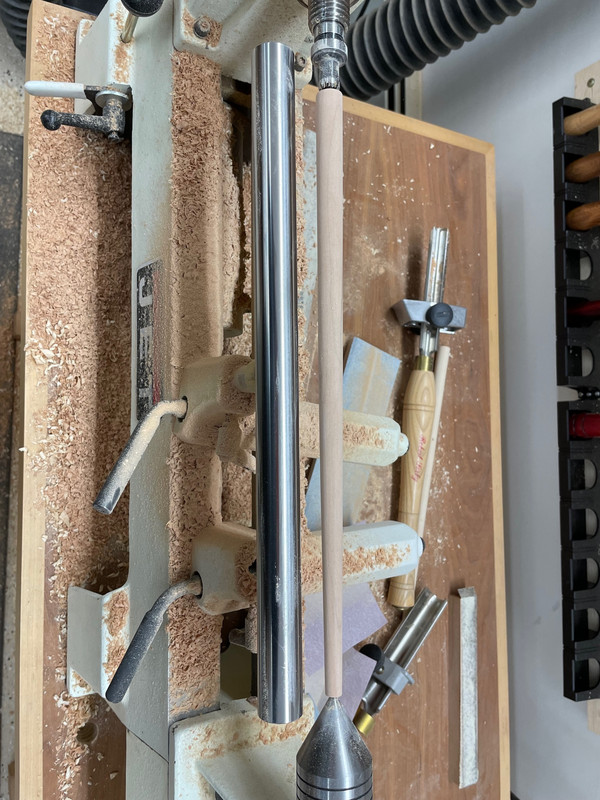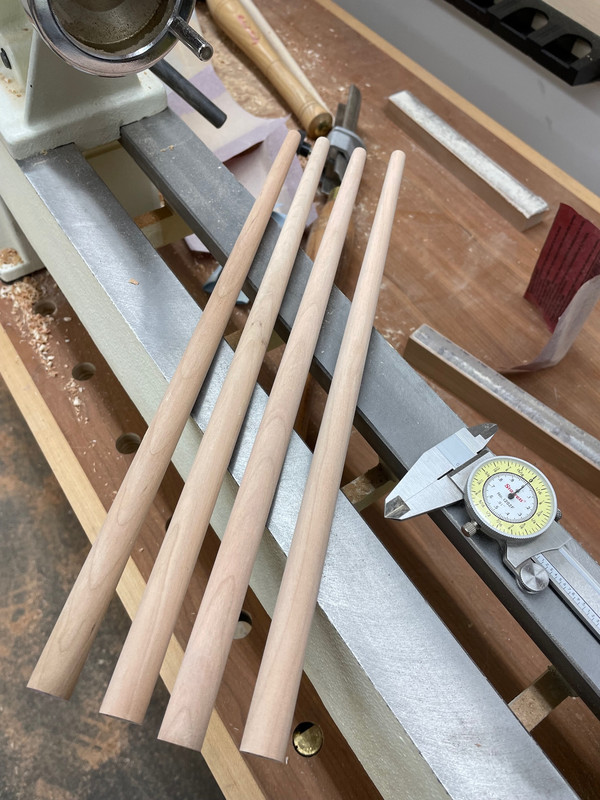I am planning on building a Shaker Setee a la Christian Becksvoort. The piece requires 22 tapered spindles: tapering from 5/8" dia. to 3/8" dia. over a length of 13-3/4". I am relatively new to turning, having made mostly chisel handles and a few turned legs. I am wondering if there are any tricks to producing multiple copies of this part so they all come out nearly identical? Here is a picture of a prototype I made today: I started with a round blank and used first a roughing gouge, then a spindle gouge, then a length of wood with 60 grit sandpaper adhered to it, then hand sanded lengthwise up to 180 grit. I can build one: what the trick to making 22 of them?
[IMG][/IMG]




 Reply With Quote
Reply With Quote





